한국응용과학기술학회 논문 검색
.jpg)
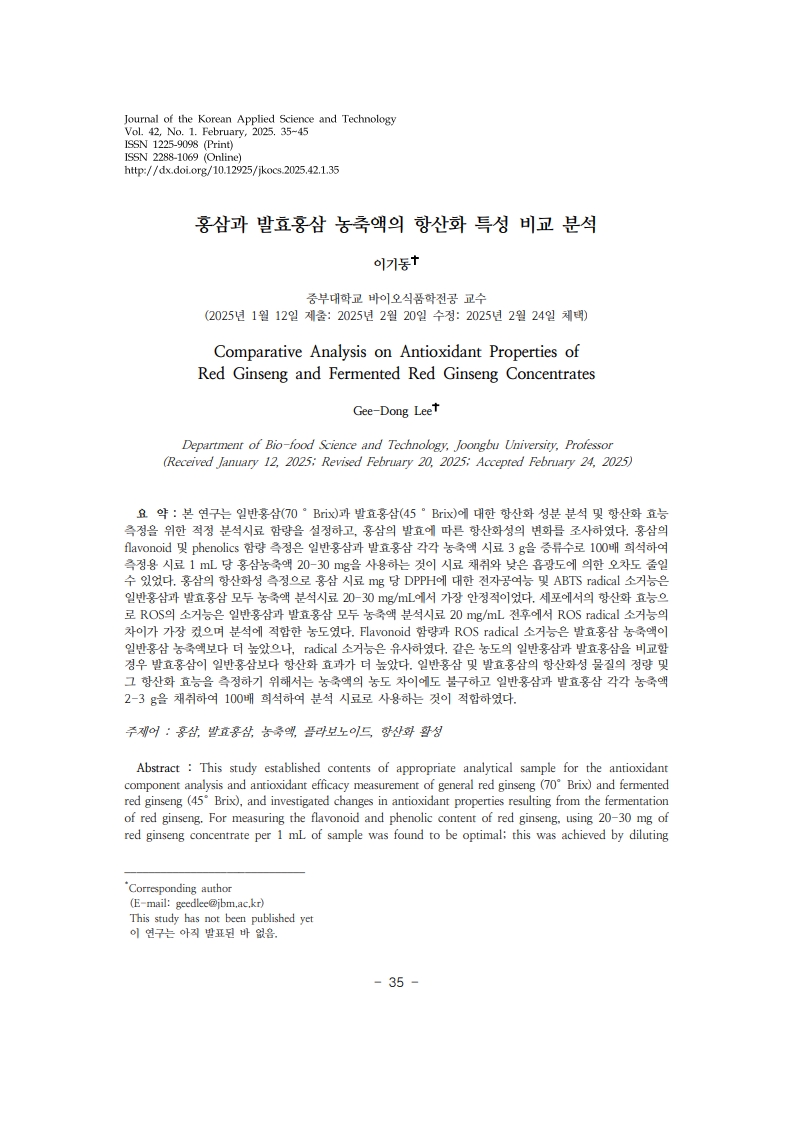
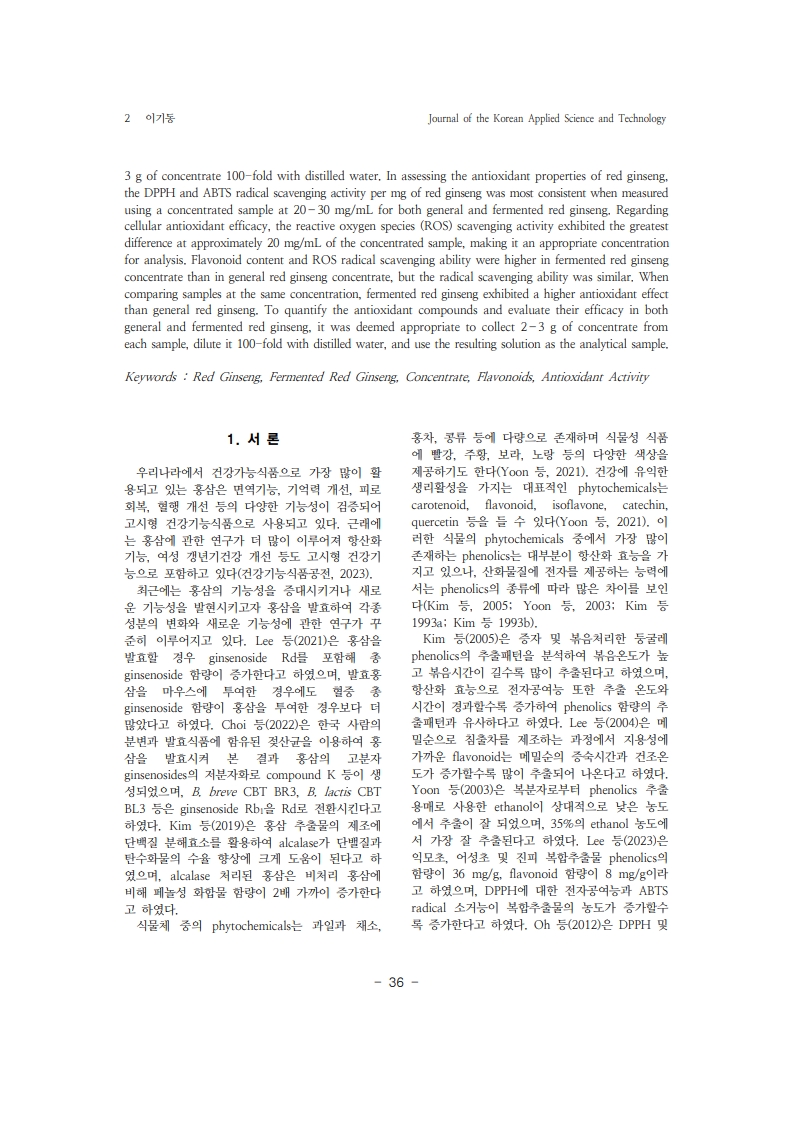
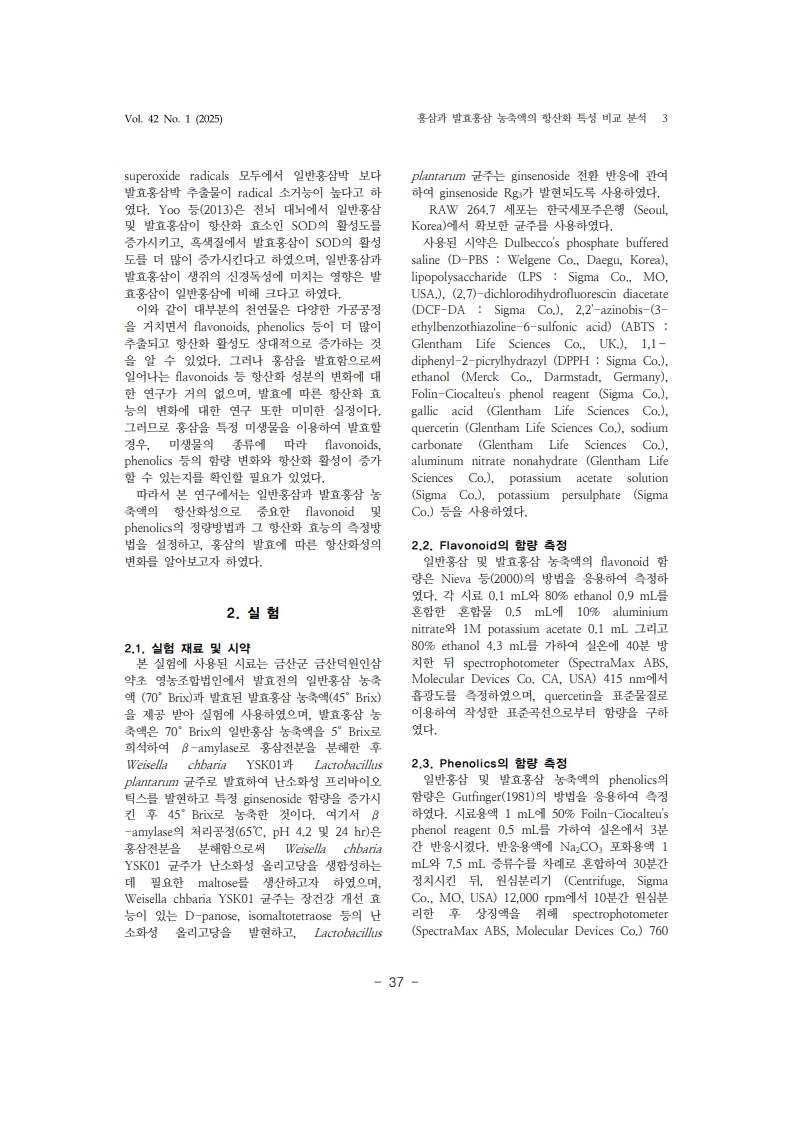
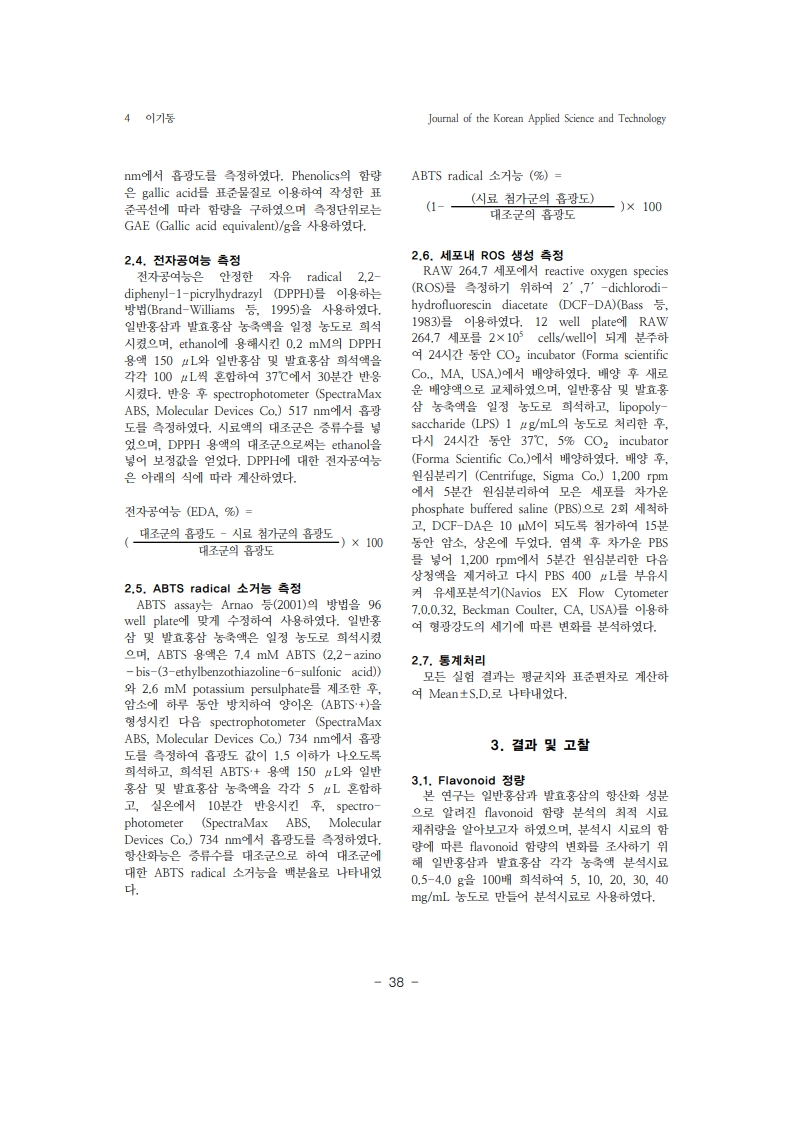
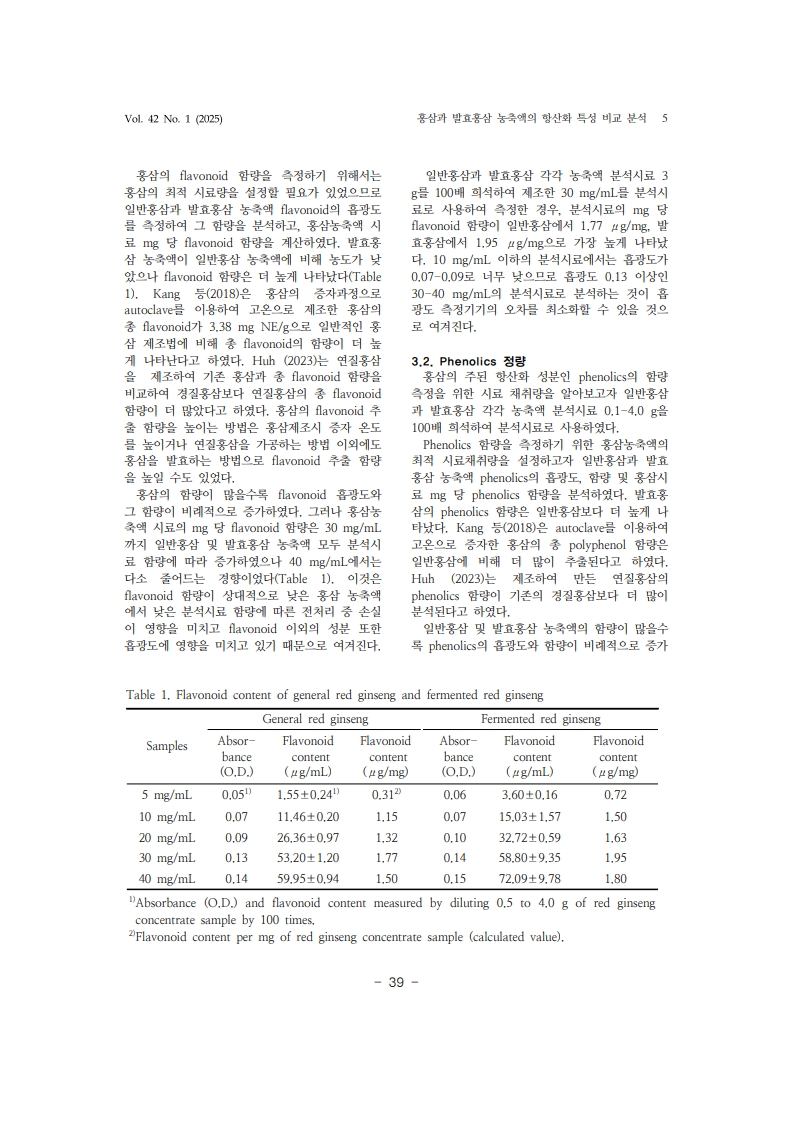


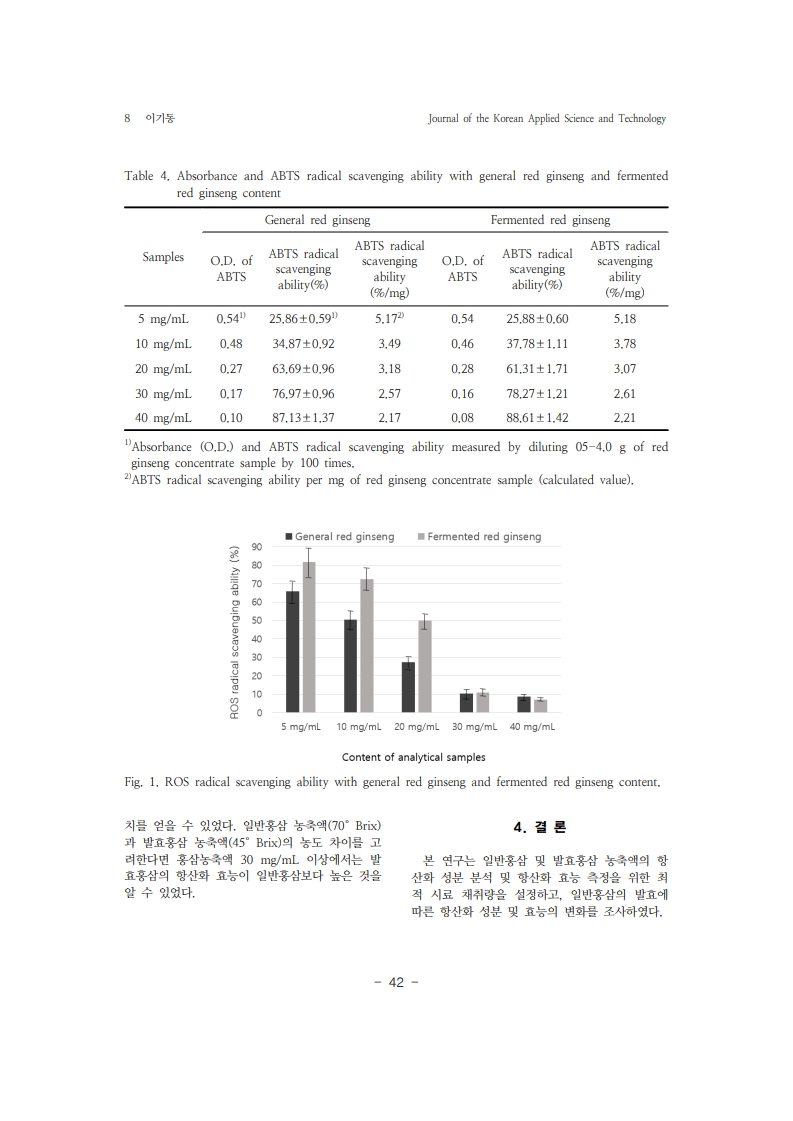
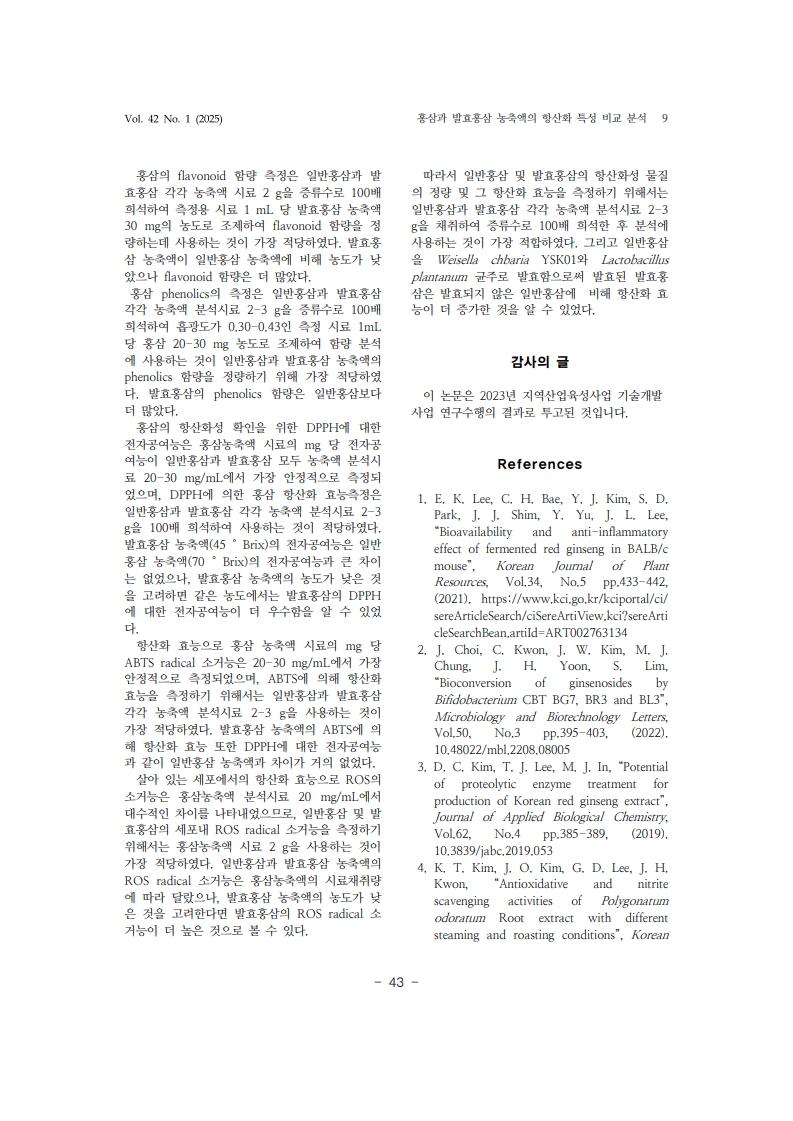
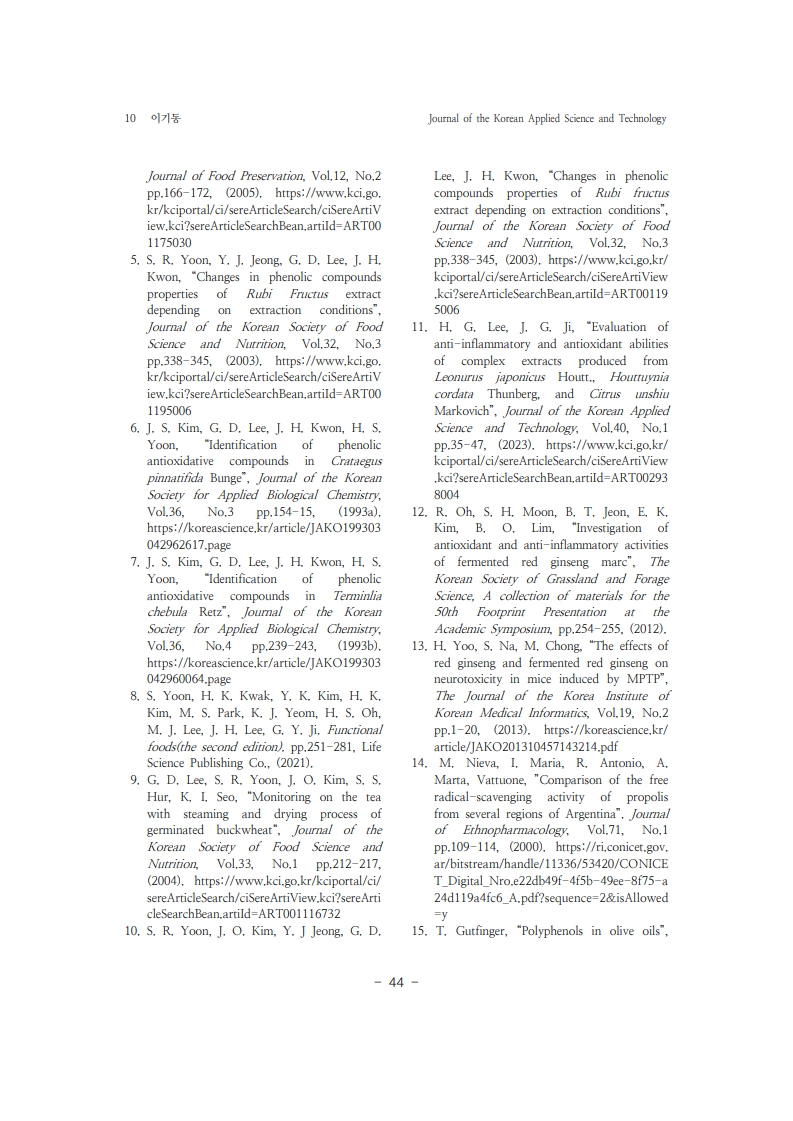
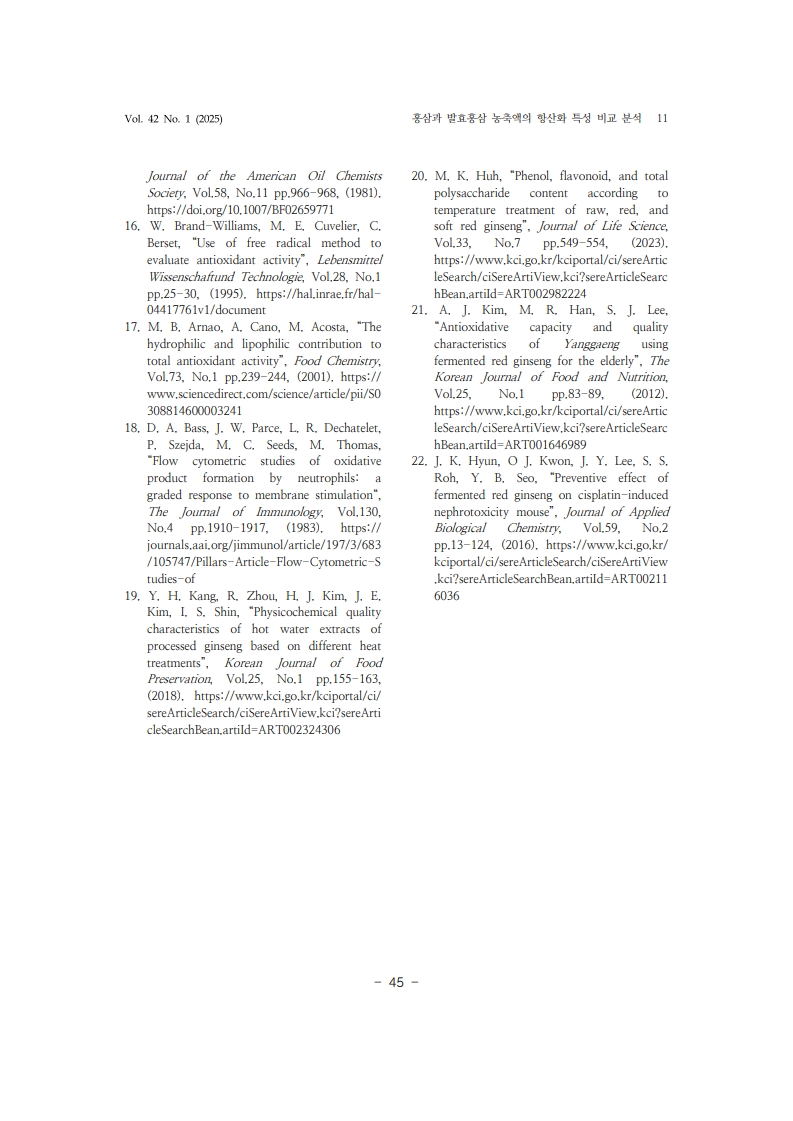
1. E. K. Lee, C. H. Bae, Y. J. Kim, S. D. Park, J. J. Shim, Y. Yu, J. L. Lee,“Bioavailability and anti-inflammatory effect of fermented red ginseng in BALB/c
mouse”, Korean Journal of Plant Resources, Vol.34, No.5 pp.433-442,(2021).
2. J. Choi, C. Kwon, J. W. Kim, M. J. Chung, J. H. Yoon, S. Lim, “Bioconversion of ginsenosides by Bifidobacterium CBT BG7, BR3 and BL3”,Microbiology and Biotechnology Letters, Vol.50, No.3 pp.395-403, (2022).
https://doi.org/10.48022/mbl.2208.08005
3. D. C. Kim, T. J. Lee, M. J. In, “Potential of proteolytic enzyme treatment forproduction of Korean red ginseng extract”, Journal of Applied Biological Chemistry, Vol.62, No.4 pp.385-389, (2019).https://doi.org/10.3839/jabc.2019.053
4. K. T. Kim, J. O. Kim, G. D. Lee, J. H. Kwon, “Antioxidative and nitrite scavenging activities of Polygonatum odoratum Root extract with different steaming and roasting conditions”, Korean Journal of Food Preservation, Vol.12, No.2 pp.166-172, (2005).
5. S. R. Yoon, Y. J. Jeong, G. D. Lee, J. H. Kwon, “Changes in phenolic compoundsproperties of Rubi Fructus extract depending on extraction conditions”,
Journal of the Korean Society of Food Science and Nutrition, Vol.32, No.3pp.338-345, (2003).
6. J. S. Kim, G. D. Lee, J. H. Kwon, H. S. Yoon, “Identification of phenolicantioxidative compounds in Crataegus pinnatifida Bunge”, Journal of the Korean
Society for Applied Biological Chemistry, Vol.36, No.3 pp.154-15, (1993a).
https://koreascience.kr/article/JAKO199303042962617.page
7. J. S. Kim, G. D. Lee, J. H. Kwon, H. S. Yoon, “Identification of phenolicantioxidative compounds in Terminlia chebula Retz”, Journal of the Korean
Society for Applied Biological Chemistry, Vol.36, No.4 pp.239-243, (1993b).
https://koreascience.kr/article/JAKO199303042960064.page
8. S. Yoon, H. K. Kwak, Y. K. Kim, H. K. Kim, M. S. Park, K. J. Yeom, H. S. Oh,M. J. Lee, J. H. Lee, G. Y. Ji. Functional foods(the second edition). pp.251-281, Life
Science Publishing Co., (2021).
9. G. D. Lee, S. R. Yoon, J. O. Kim, S. S. Hur, K. I. Seo, “Monitoring on the teawith steaming and drying process of germinated buckwheat“, Journal of the
Korean Society of Food Science and Nutrition, Vol.33, No.1 pp.212-217,(2004).
10. S. R. Yoon, J. O. Kim, Y. J Jeong, G. D. Lee, J. H. Kwon, “Changes in phenoliccompounds properties of Rubi fructusextract depending on extraction conditions”,
Journal of the Korean Society of Food Science and Nutrition, Vol.32, No.3pp.338-345, (2003).
11. H. G. Lee, J. G. Ji, “Evaluation of anti-inflammatory and antioxidant abilitiesof complex extracts produced from Leonurus japonicus Houtt., Houttuynia
cordata Thunberg, and Citrus unshiuMarkovich”, Journal of the Korean AppliedScience and Technology, Vol.40, No.1 pp.35-47, (2023).
12. R. Oh, S. H. Moon, B. T. Jeon, E. K. Kim, B. O. Lim, “Investigation ofantioxidant and anti-inflammatory activities of fermented red ginseng marc”, The
Korean Society of Grassland and Forage Science, A collection of materials for the50th Footprint Presentation at the Academic Symposium, pp.254-255, (2012).
13. H. Yoo, S. Na, M. Chong, “The effects of red ginseng and fermented red ginseng on neurotoxicity in mice induced by MPTP”, The Journal of the Korea Institute of Korean Medical Informatics, Vol.19, No.2 pp.1-20, (2013).https://koreascience.kr/article/JAKO201310457143214.pdf
14. M. Nieva, I. Maria, R. Antonio, A. Marta, Vattuone, ”Comparison of the freeradical-scavenging activity of propolis from several regions of Argentina”. Journal
of Ethnopharmacology, Vol.71, No.1 pp.109-114, (2000).
15. T. Gutfinger, “Polyphenols in olive oils”, Journal of the American Oil ChemistsSociety, Vol.58, No.11 pp.966-968, (1981). https://doi.org/10.1007/BF02659771
16. W. Brand-Williams, M. E. Cuvelier, C. Berset, “Use of free radical method to evaluate antioxidant activity”, Lebensmittel Wissenschaftund Technologie, Vol.28, No.1 pp.25-30, (1995). https://hal.inrae.fr/hal04417761v1/document
17. M. B. Arnao, A. Cano, M. Acosta, “The hydrophilic and lipophilic contribution to total antioxidant activity”, Food Chemistry, Vol.73, No.1 pp.239-244, (2001). https://www.sciencedirect.com/science/article/pii/S0308814600003241
18. D. A. Bass, J. W. Parce, L. R. Dechatelet, P. Szejda, M. C. Seeds, M. Thomas,“Flow cytometric studies of oxidative product formation by neutrophils: a graded response to membrane stimulation“, The Journal of Immunology, Vol.130,No.4 pp.1910-1917, (1983).
19. Y. H. Kang, R. Zhou, H. J. Kim, J. E. Kim, I. S. Shin, “Physicochemical qualitycharacteristics of hot water extracts of processed ginseng based on different heat
treatments”, Korean Journal of Food Preservation, Vol.25, No.1 pp.155-163,(2018).
20. M. K. Huh, “Phenol, flavonoid, and total polysaccharide content according totemperature treatment of raw, red, and soft red ginseng”, Journal of Life Science, Vol.33, No.7 pp.549-554, (2023).
21. A. J. Kim, M. R. Han, S. J. Lee, “Antioxidative capacity and qualitycharacteristics of Yanggaeng using fermented red ginseng for the elderly”, The
Korean Journal of Food and Nutrition, Vol.25, No.1 pp.83-89, (2012).
22. J. K. Hyun, O J. Kwon, J. Y. Lee, S. S. Roh, Y. B. Seo, “Preventive effect offermented red ginseng on cisplatin-induced nephrotoxicity mouse”, Journal of Applied Biological Chemistry, Vol.59, No.2pp.13-124, (2016).

